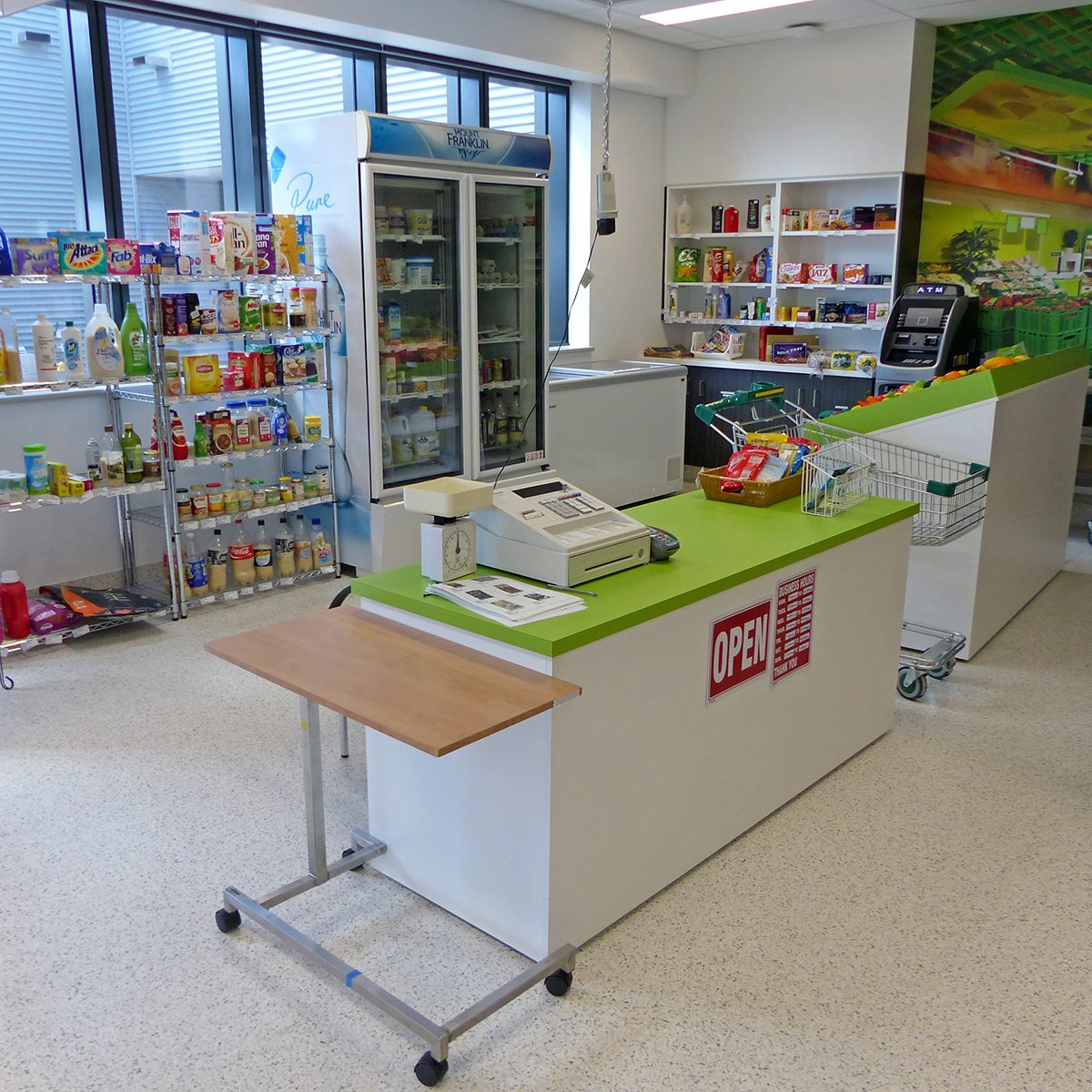Twenty-one hospital facilities and patient spaces were improved during the 2018-2019 financial year thanks to generous donations. This included:
Robina Hospital LIFEspace
The Rehabilitation Unit at Robina Hospital received funding for its LIFEspace (pictured below) to set up ‘real life’ environments for patients undergoing physical and cognitive rehabilitation. The LIFEspace environment includes a mini shopping centre, outdoor gardening area and leisure spaces on the ward.
This will allow occupational therapists to assess a patient’s ability to do ‘real life’ activities and set up therapy programs to improve the ability to do these important daily activities. Keeping patients engaged with activities will also prevent physical and cognitive decline, as well as improve mood and overall function, which also helps decrease a patient’s length of stay in hospital. An estimated 300 patients per year will benefit from this facility improvement.

Lavender Unit
A series of colourful wall skins were funded for the Lavender Unit at Gold Coast University Hospital to make the space more welcoming and less clinical for mothers staying in the unit with their babies while receiving care for severe mental illness.
Having a warm and welcoming mental health unit that is baby friendly will make mothers more relaxed and comfortable, which support and aid mothers in bonding with their babies. The enhanced space will promote better outcomes for mothers, babies and their families.
Child Focussed Environments
Children and families visiting Gold Coast Health’s Community Child Health facilities at Southport Health Precinct, Robina Health Precinct, Palm Beach, Helensvale and Labrador will experience a more child-friendly and colourful environment after 36 rooms within these facilities were improved.
The improvements to these clinic rooms will assist in minimising children’s anxiety whilst undergoing clinical assessments and therapies. The enhancement of current waiting rooms will see children able to be engaged in a safe play space, which will also assist in minimising their anxiety and behavioural challenges within waiting rooms by keeping them occupied and focussed on play rather than their clinical care requirements. Approximately 15,000 child patients from birth to school age will be positively impacted by these upgrades per year.
